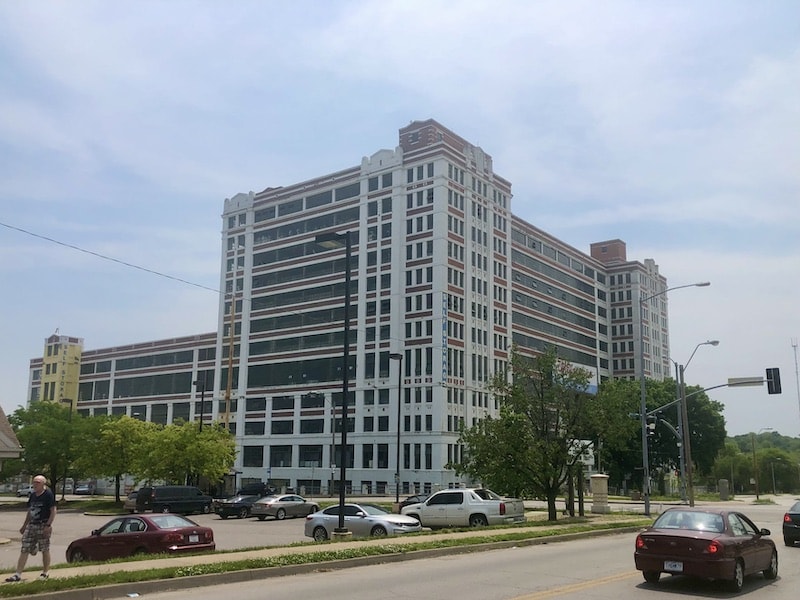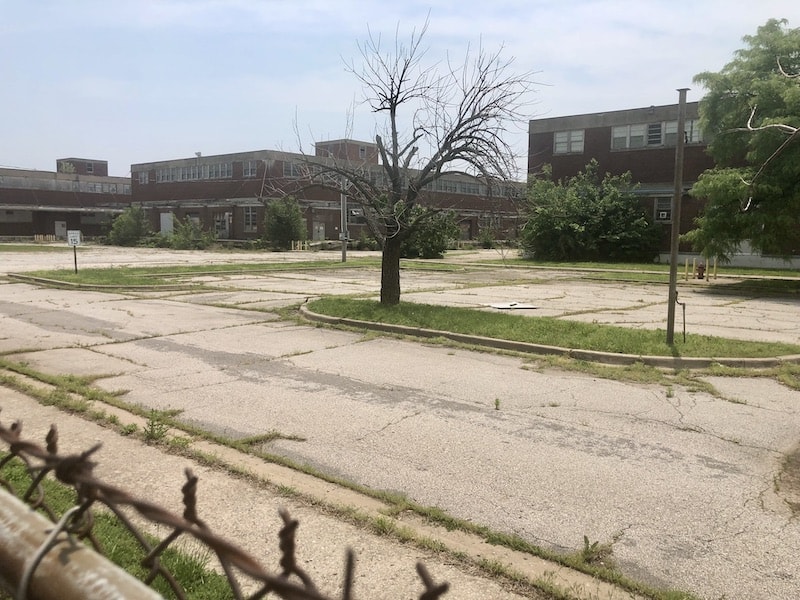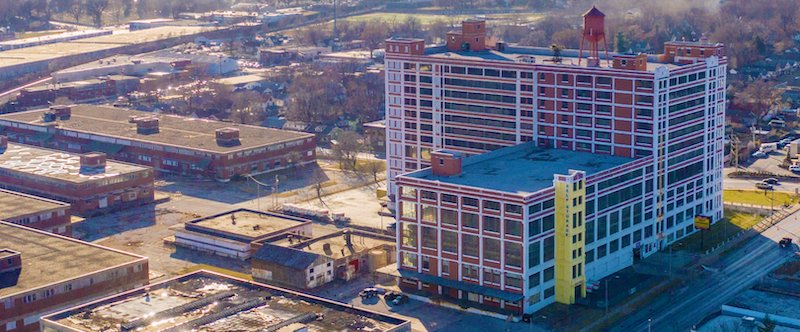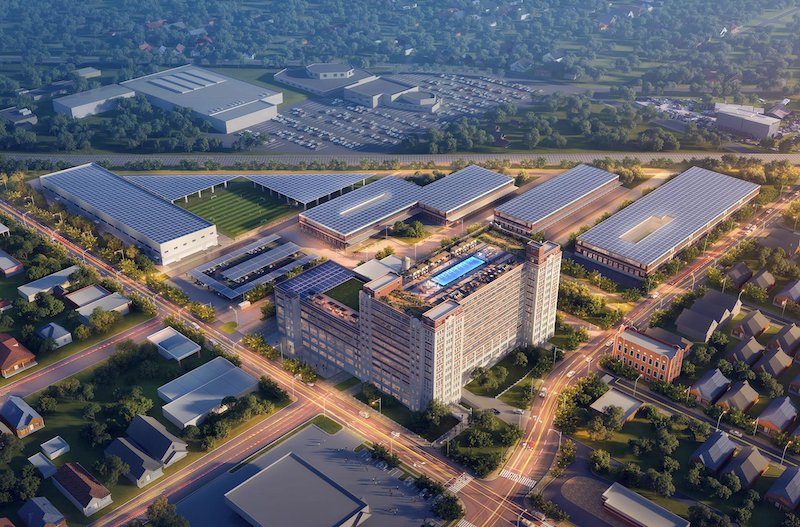Developer Tackles Historic Building for $120M Affordable Housing Project

Published May 18th, 2022 at 11:56 AM
By Kevin Collison
Fresh from building a super-green apartment complex from scratch, developer Jonathan Arnold is tackling a very different project, renovating a massive, century-old building into affordable housing.
Arnold wants to convert the historic National Cloak and Suit Company building at 5401 Independence Ave. into 352 apartments at an estimated cost of $120 million. The majority would be affordable to households earning 60 percent or less of area median income (AMI).
The 650,000 square-foot National Cloak building was completed in 1919 and once housed the largest mail-order apparel business in the eastern United States, employing 2,000 people. Its interior floors total 14 acres of floor space.
The now tired, 12-story structure dominates the corner of Independence and Hardesty avenues, and is a long way both in geography and design from the Second and Delaware project Arnold completed a year ago.
Second and Delaware was designed as a highly-energy efficient project appealing to selective tenants willing to pay premium rents in the River Market, one of downtown’s hotter residential districts.

A rendering of how one of the proposed Historic Northeast Lofts apartments would look. (Rendering from PIEA application)
Arnold said what he’s calling the Historic Northeast Lofts project has a similar promise, although for a different clientele.
“We’re attracted to places that have existing or the potential for a walkable, urban lifestyle and being able to be served by transit and in close proximity to downtown and jobs,” he said.
“The BRT Line that was recently announced along Independence should allow the site to have better transit connections to major employment centers in the region.”
Throw in a nearby grocery store and two pharmacies and you have the “beginnings of what could be a vibrant pedestrian hub,” he said.
Most of all, it’s a relatively poor Northeast Kansas City neighborhood that needs more affordable housing. It also has witnessed what was once called the Hardesty Federal Complex deteriorate for several decades.
At 60 percent Metro KC AMI, a one-person household would have to earn $40,700 or less; two-person, $46,500, and three-person, $52,320, to be eligible for an affordable unit at the Historic Northeast Lofts project under federal guidelines.

The Hardesty Federal Complex has been a neighborhood eyesore for several decades.
The old National Cloak building, now being used for storage, is one of several properties on an 18-acre Hardesty site that includes four massive, vacant warehouse buildings totaling 1 million square feet.
After its private tenants left, the U.S. Army acquired the property in 1940 and used it as the Kansas City Quartermaster Depot until 1953. Clothing and equipment were shipped from there, and it processed the personal effects of soldiers killed during the war.
The property was transferred to the federal General Service Administration in 1960. The GSA then sold the old National Cloak building and one of the warehouses in 1981 for storage use.
In 2011, the remaining property was sold to a New York-based organization called Asian Americans for Equality that planned to redevelop it as an education campus. That endeavor was called the Hardesty Renaissance Corp.

The 18-acre Hardesty Federal Complex included the National Cloak building in the foreground and the warehouses to the left. (Photo from PIEA application)
Those plans however, have failed to materialize and now Arnold, who’s firm is Arnold Development Group, has a contract to purchase all the properties.
“Our plan is to build residences in the tall building and bring in the amenities we learned are in high demand from Second and Delaware,” he said.
Those include a rooftop garden, landscaped courtyards, some three- to four bedroom units that could be used by families or work-live space and a possible food hall featuring local vendors, according to documents filed with the Planned Industrial Expansion Authority.
Arnold also wants to incorporate the same “passive building” efficiency features as Second and Delaware which would reduce energy use by 70- to 90 percent from conventional apartment projects.
“We are aiming to make the project net-zero by placing a large solar array on the roofs of the low rise buildings,” he said.
The developer already has lined up federal and state historic tax credits totaling $36 million in equity, and federal low-income housing tax credits valued at $27.9 million. He anticipates obtaining $56.3 million in permanent financing.

An overview of how the full build-out of the former Hardesty Complex; additional new construction and renovation is expected in future phases. (Rendering form Arnold Development Group)
Arnold also plans to apply for tax incentives from the PIEA, which recently declared the property blighted, the first step in the application process.
“We don’t see a lot of interest in this part of the city,” said David Macoubrie, PIEA executive director. “We’re glad to see interest there, especially in the form of affordable housing.”
As was the case with Second and Delaware, Arnold has listed a housing subsidiary of Berkshire Hathaway, the firm owned by Omaha billionaire Warren Buffett, as an investor according to the PIEA document.
Other investors are Yarco Property Management and Commerce Bank. Crossman Construction, the builder of Second and Delaware, would be the contractor for the Historic Northeast Lofts project.
If the necessary approvals and financing is obtained, Arnold said construction on the Historic Northeast Lofts project could begin before the end of the year with completion anticipated in 2024.
The proposal is scheduled to be reviewed by City Plan Commission June 7.


